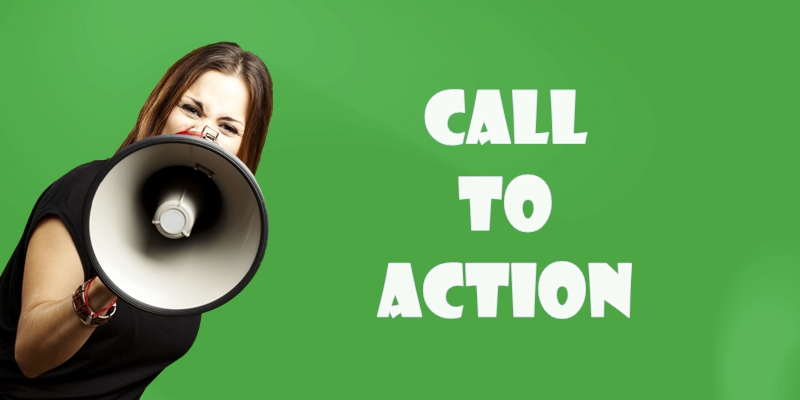It is of no doubt that having an effective call to action is a vital part of any website. Including a convincing call to action (CTA) in your marketing efforts can help drive your visitors to take immediate action. A call to action is not only restricted to e-Commerce sites. Each site must have an objective that calls users to take an action, whether it is filling in a contact form, signup for a newsletter or volunteering their time.
You could write the best, emotional, effective copy for your printed advertising media, and it wouldn’t amount to anything if a call to action wasn’t defined clearly. Going by best practices for email marketing, good call to action phrases act like a trail of breadcrumbs driving potential clients straight to your business. Here are some top strategies which help achieve just that.
1. Be Demanding:
You must make sure that your action is simple, short, strong and to the point of being demanding. Say accurately what you need the potential client to do: “download,” “watch,” “buy.” Avoid weak words that many sites are using; for example, “get,” “click,” “see,” or “try.”
2. Choose a Single Call to Action:
Many marketers think that if using one CTA is good, including two or more is even better. But in reality, more than one call to action can confuse your audience. Therefore, wait and think about the thing you would like your audience to do – this is your CTA. If you are not sure about which channel to drive your audience to (maybe you are choosing an online form and a phone call), have a go at testing both separately. This way you can avoid leaving an improved engagement to chance.
3. Make Sure Your Call to Action is Highly Visible:
It doesn’t matter if you’re using direct postal mail, email or a website, your call to action must be extremely clear. This can be practiced in various ways: by using some other color, including your CTA with white space and positioning it front and center. A most popular way on websites is to deliver a floating CTA button that scrolls up and down so it is always on display.
4. Be Urgent:
Inform your site visitors that being unable to convert will most likely result in a missed opportunity. For example, offer an introductory price for your product, and make it clear that it is just going to last for a short time. So, if your visitor does not convert now, he may lose a chance to save. Using simple words such as “now,” “immediately” or “today,” suggests a feeling of urgency that prompts the visitor to click now instead of later. Creating this sense of urgency is thus an important step in driving engagement.
5. Design a Short and Simple Engagement Path:
Design an engagement path, from call to action to conversion, that is simple, short and consistent. Every extra step in your engagement way will lose a percentage of your audience. If your CTA includes a phone call, try to restrict the amount of menu options that your visitors must navigate to reach a live person. If your CTA includes clicking on an email or website link, the less clicks the better.
Finally, aim to make the message look and feel personal and predictable from beginning to end. This can mitigate confusion and dissatisfaction regarding your audience. For instance, if your email and landing page all look different and present a different message, you will probably have a high bounce rate.
If you don’t want to miss anything from Makesbridge, subscribe to our newsletter or follow us on Twitter, Facebook and LinkedIn.
Related Posts:
- 6 Basic Tips to Improve Your Lead Nurturing Campaigns
- 6 Online Marketing Basics Every Entrepreneur Must Learn
- 10 Quick Ways to Improve your Email Marketing Subject Lines
- Is Email Marketing Dead?
